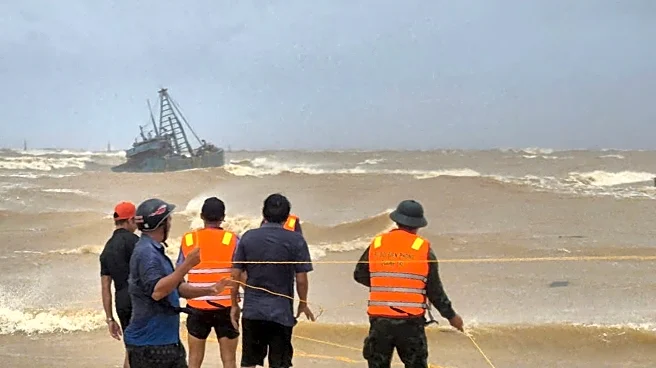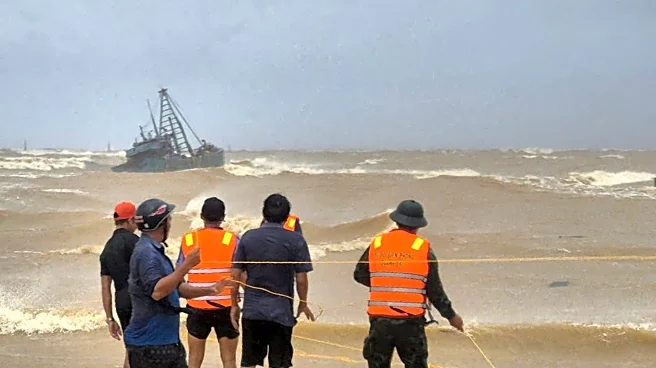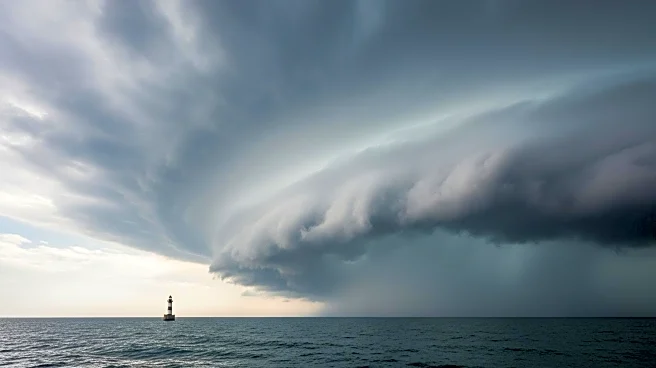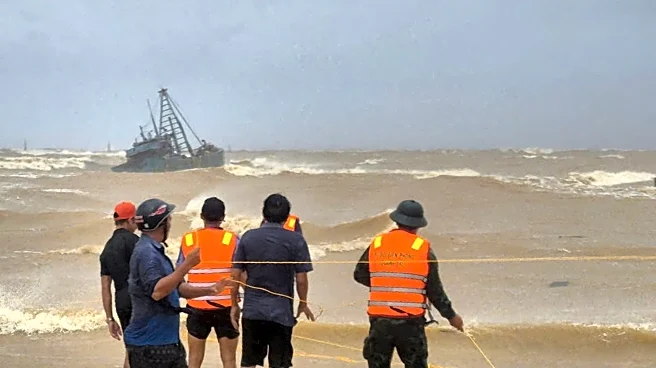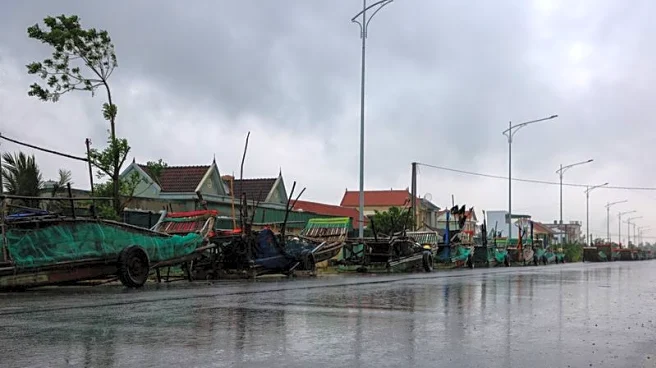What's Happening?
Typhoon Bualoi has struck Vietnam, resulting in the deaths of at least 11 people and causing significant damage to infrastructure. The typhoon made landfall in central Vietnam, bringing powerful winds and heavy rain that destroyed homes and power lines. The storm has also left dozens missing or injured, with rescuers searching for 17 fishermen whose boats were hit by large waves. Nearly 30,000 people were evacuated in anticipation of the typhoon, and flights were delayed or canceled over the weekend. The central province of Ha Tinh experienced a blackout due to downed power lines, and torrential rains flooded crop fields. Vietnamese Prime Minister Phan Minh Chinh has issued urgent instructions to enhance rescue and relief efforts.
Why It's Important?
The impact of Typhoon Bualoi highlights the increasing frequency and intensity of extreme weather events, which are likely exacerbated by climate change. The destruction caused by the typhoon affects the livelihoods of thousands of people in Vietnam, disrupting agriculture and infrastructure. The evacuation and emergency response efforts demonstrate the challenges faced by governments in managing natural disasters. The situation underscores the need for improved disaster preparedness and climate resilience strategies in vulnerable regions.
What's Next?
Authorities in Vietnam are continuing rescue and relief operations, with efforts focused on finding missing individuals and providing aid to affected communities. The typhoon is expected to bring additional rainfall in northern Vietnam, which could lead to further flooding. The government may need to assess and strengthen infrastructure to better withstand future storms. International aid and support may be sought to assist in recovery efforts.
Beyond the Headlines
The devastation caused by Typhoon Bualoi raises ethical and environmental concerns regarding climate change and its impact on vulnerable populations. The increasing severity of storms calls for global cooperation in addressing climate change and investing in sustainable development. Long-term shifts in weather patterns could lead to more frequent and severe natural disasters, necessitating changes in policy and infrastructure planning.

